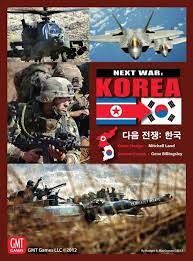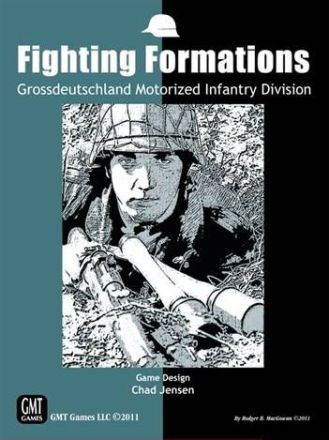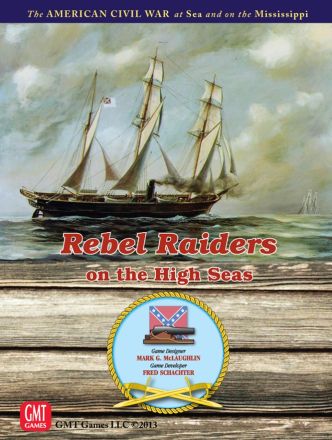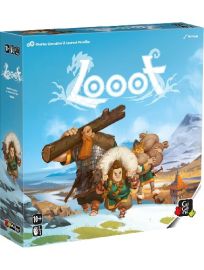DAL SITO GMT:
Next War: Korea, Game #1 in our Next War series, allows players to fight a near future war on the Korean peninsula. In this updated and improved version of the previously-released Crisis: Korea 1995, players have access to virtually all military assets of North and South Korea, as well as large forces from the USA and the PRC. The integrated, easy to learn air-land combat system allows for unit efficiency, armor effects, light infantry, attack helicopters, Close Air Support, Cruise Missiles, and the particularly tough terrain of Korea.
Make no mistake: Next War: Korea is not an Introductory wargame. Rather, we have intended herein to create a system (and a series) that will allow detailed study of modern warfare in various venues as well as engaging gameplay. That said, the Standard Game rules encompass a fairly straightforward ruleset that will, we think, be considered pretty "easy to learn" by experienced wargamers. So players who choose to play Standard Game scenarios can have a relatively quick game when that's what suits them. The real flavor of a war in the theatre, though, comes through in the Advanced Game, where you get much more control over airpower and can more clearly see each side's strengths and weaknesses. For players who want a "mini-monster game" experience, playing the Advanced Game Campaign Scenarios with some or all of the optional rules will definitely "deliver."
So our hope is that we have created a game with enough variety and scaling of complexity that you can find an engaging and maybe even enlightening experience whether you want to play a fast two-player game, a longer monster game, or an ongoing solitaire study. We intend to provide tools for online game play as well (a Vassal module is being created now for use during playtesting) so that this game can be played in either real-time or over longer periods on the internet.
Units
Ground units in Next War: Korea represent primarily divisions and brigades of armies of North and South Korea, The United States and her Allies, and the People's Republic of China. All ground units are rated for their attack and defense strengths, movement capabilities, and unit efficiency.
Air units represent fighter, bomber, and attack squadrons of the major combatants and are rated for All-Weather Capabilities as well as their range, average pilot skill, and their abilities in Air-to-Air Combat, Close Air Support, and Strike missions.
(See the "Sample Unit Counters" link near the top of this page for a peek at some of the Ground and Air units.)
Naval units and capabilities are abstracted somewhat in the Next War series. A "Sea Control" mechanism reflects the results of the surface and sub-surface battles, while the game's naval unit counters represent the major Aircraft Carrier Battle Groups and Amphibious Ready Groups of the US Navy. Additional amphibious capabilities are represented by the Special Forces capabilities of each side.
Maps and Terrain
The game's two maps present modern-day Korea at a scale of roughly 7.5 miles per hex. The maps cover the entire peninsula east-to-west and stretch from about 30 miles north of Pyongyang and Pusan in the North to Taegu in the south. Hexes are larger than the standard 1/2" hex found in Crisis Korea: 1995, allowing us to use larger 9/16" counters in this game and make it a bit easier for players to move game pieces in the congested areas around the DMZ.
Game System
As in Crisis: Korea 1995, there are two types of game turns: Initiative turns (longer turns where the side with the Initiative has more opportunities to move and attack) and Contested turns (shorter turns where neither side has the initiative but each is trying to muster the resources to regain the initiative). Thus the inherent "initiative player advantage" built into the game system incents each player to always be thinking about how to seize and maintain the battlefield initiative.
A Standard game turn is composed of:
-
Weather Determination. Bad weather can severaly hamper air and naval operations activity and can significantly slow ground operations.
-
Initiative Determination
-
an Air/Naval Phase, wherein air superiority levels and air availability are determined and Sea Control is established or modified.
-
One or more Movement and Combat Phases that allow both sides to move, react, and fight, with an advantage to the Initiative player on non-Contested turns
-
Arrival of Reinforcements and Replacements
-
Victory Determination
Combat resolution examines not only unit strengths but also unit efficiency (representing training, doctrine, and morale), as well as the terrain where the combat takes place. The CRT tends to be very bloody, reflecting both what we believe will be a degree of attritional warfare early on in light of the massive artillery concentrations near the DMZ as well as the lethality of modern weapons. As in many games, casualties represent not only actual combat losses, but also losses of unit cohesion brought about by the rapidity and pace with which modern armies are able to engage and exploit on the battlefield.
Scenarios
There are several Standard Game scenarios. The first three one mappers, "Seoul Train," "Uijong Blues," and "East Coast Highway" (North Map only) cover the first week of the war by dividing the DMZ into roughly three equal sections. These focus on the initial assaults to break the South Korean lines and introduce players to the basic mechanics of the system, while giving them insight into attack and defense strategies for the "big game." Players can also play the entire DMZ front scenario, "Militarized Zone," (North Map only) for the first week (basically, combining the three scenarios above). In addition, players can add the South Map and play the entire Standard Campaign game, "All In." One other scenario is provided which examines the U.S. Amphibious landing. "Inchon Again." In addition, a scenario, "They Did What?" is provided for players to experiement with a South Korean attack on North Korea without, however, the help of the United States.
The Advanced Game Scenarios come in three flavors a la NATO: The Next War in Europe: Strategic Surprise, Tactical Surprise, and Extended Buildup. This offers the players the ability to game out a variety of "At Start" war scenarios based on varying levels of readiness.
There is also an International Posture Matrix a la Flashpoint: Golan to allow players to experiment with a variety of intervention options for the non-Korean players in the region.
|
Notes for Players of Crisis Korea: 1995
The Next War series is heavily based on the base system and rules pioneered in Crisis Korea: 1995, modified and enhanced based on additional testing and development over the past 15+ years. For CK:95 veterans, changes from the CK:95 system include:
Standard Game changes
Advanced Game changes:
Game (Korea) Specific Rules
Optional Rules
|
| Casa editrice | GMT |
|---|---|
| Casa Editrice | GMT GAMES |
| Numero giocatori | 2 |
| Età Consigliata | 14 + |
| Durata | 120 - 480 min. |
| Lingua | Inglese |





